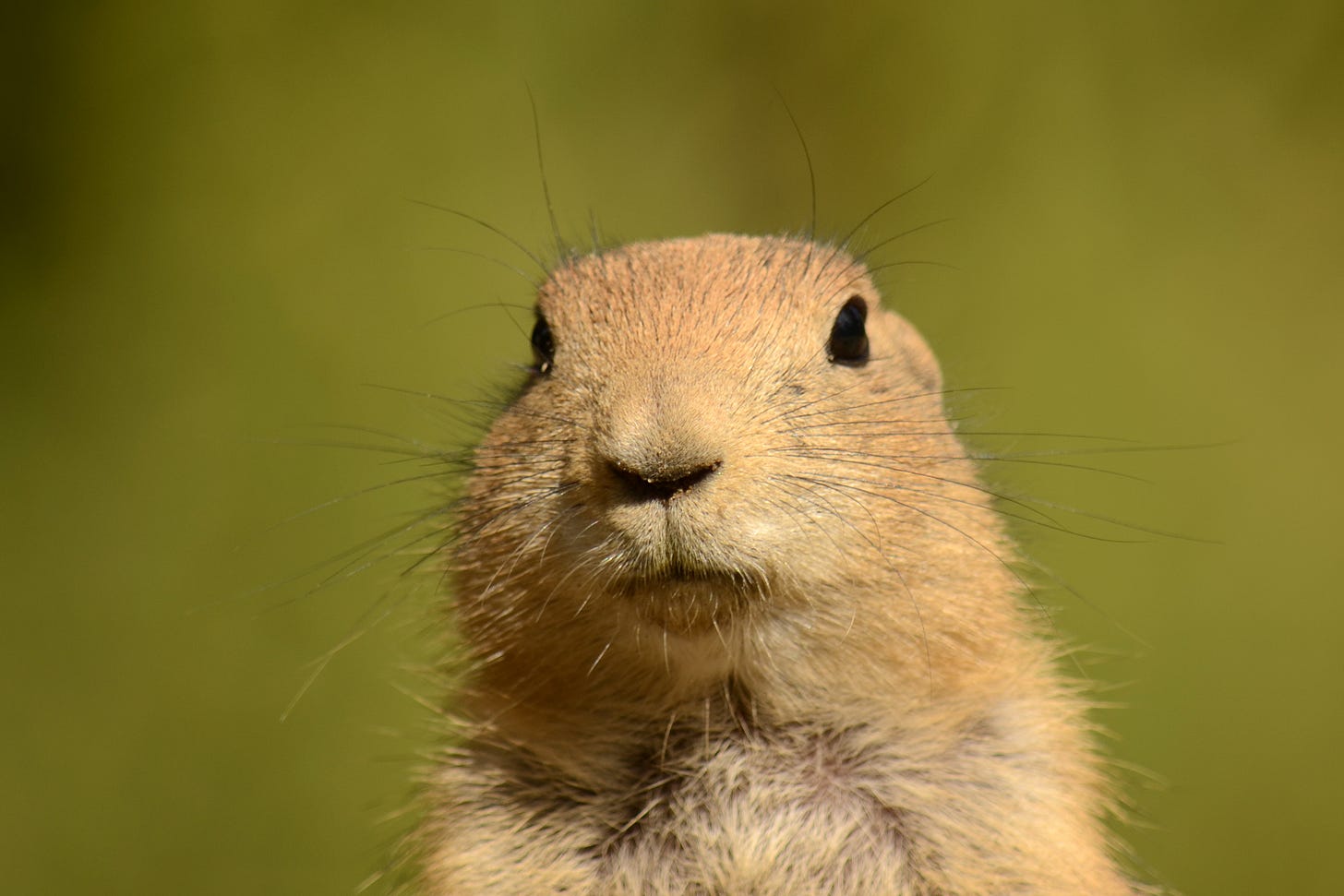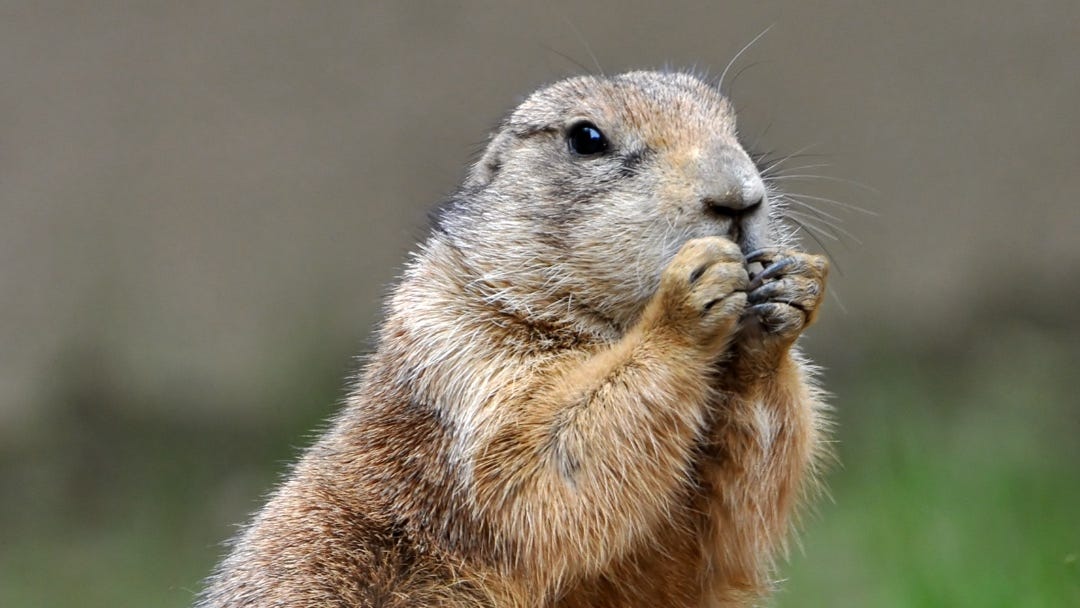How Statistical Analysis is Reshaping Prairie Dog Science
In 1805, President Thomas Jefferson received an unusual gift: a live "barking squirrel" sent by explorers Meriwether Lewis and William Clark from the American West. Today, we know this cute creature was a prairie dog, a species previously unknown to science.
I wonder how this prairie dog survived its 4,000-mile journey from the Great Plains to Washington, DC, through hardly explored areas the U.S. had only recently bought from France. However, it was a success since President Jefferson, known for his scientific curiosity, was reportedly fascinated by it.
I have always enjoyed reading about the Lewis and Clark expedition. Stephen Ambrose's 1996 biography of Meriwether Lewis, Undaunted Courage, is a good start. After I read it a couple of years ago, I traveled to Montana and visited several sites where the explorers had walked some 200 years ago. My trip was west of the prairie dog habitat of the Great Plains, where Lewis and Clark had traveled the year before they entered what would later be the state of Montana.
Their expedition reads like an adventure story combined with detailed observations of nature. In their distinctive use of English, which reads like a phonetic interpretation, Lewis and Clack provided the first scientific description of prairie dogs in their natural habitat. They described the rodents' complex burrow systems and the tendency to live in large colonies. They also mentioned their distinctive "barking" calls that inspired their name.
In the footsteps of Lewis and Clark
These initial reports laid the groundwork for centuries of scientific study and public fascination with prairie dogs. Since then, scientists' understanding of these remarkable animals has grown significantly; the species is much more complex and ecologically significant than those first explorers could have imagined.
More than two centuries after the first prairie dog arrived at the White House, researchers like Dr. Jennifer Verdolin of the University of Arizona specialize in prairie dog behavior and ecology. After careful statistical analysis of field observation and genetic data, scientists have much better insights into the animals' social behavior and role in the ecosystem.
Those new insights are valuable since prairie dogs are challenged by climate change, disease, and habitat loss due to human encroachment on their native grasslands in North America. Prairie dogs are down to only five percent of their historical peak size, which impacts the entire ecosystem.
These cute rodents create extensive burrow systems, which provide them shelter and protection from predators. These holes also provide safety for other species, like snakes and burrowing owls. On the other hand, prairie dogs are just as pivotal in the entire ecosystem as a critical food source for animals like the black-footed ferret, one of North America's most endangered mammals. The more we understand the prairie dogs' importance in the ecosystem, the better we can strategically manage the ecosystem when urbanization or other human activities threaten their habitats.
I found it fascinating to learn about one of these new findings that felt counterintuitive. Not being an expert, I would have easily believed that the best conservation practice in case of habitat loss through urban development would be colony-level relocations for these rodents that cooperate in socially complex structures. Many experts have intuitively said the same for many years, but these policies were unsuccessful and led to high mortality rates.
New insights into prairie dogs' social dynamics
Dr. Jennifer Verdolin's field observations and statistical analysis have led to surprising new insights into prairie dogs' social dynamics. She explained previously overlooked aspects, and her findings will likely lead to reevaluating the currently used relocation policies. The results of her study suggest that the primary purpose of prairie dog social group cooperation is the defense of the community. This cooperative behavior seems to be independent of exclusive mating rights. Until recently, scientists did not know that female prairie dogs frequently mate outside their immediate social groups. This insight helps to explain the low success rate of colony-level relocations.
New relocation policies based on a more accurate picture of prairie dog social behavior will hopefully improve long-term survival rates. Such an evidence-based approach may strengthen the effectiveness of prairie dog conservation efforts and become a model for relocation efforts for other species facing similar challenges in our rapidly changing world.
New tools for data analysis
Dr. Jennifer Verdolin's groundbreaking study on prairie dog behavior is based on extensive fieldwork and genetic sampling. She used JMP statistical software, and discovering this powerful tool has transformed her approach to data analysis. It enabled her to discover patterns she might have otherwise missed.
Cracking large quantities of data is not her specialty; she is a biologist and not a statistics expert. However, the software visualization tools made it easy to spot anomalies and outliers, and through repeatability, she could ensure consistency across all her analyses. Her results prove that JMP statistical software is not just a tool for statisticians but an instrument researchers across many disciplines can use for their research.
It's been more than 200 years since members of the Lewis and Clark expedition first observed the behavior of cute prairie dogs and noted their communication skills. Science has evolved significantly in those two centuries, and recent developments have given science new research capabilities. A pivotal tool in the prairie dog study was the latest statistical software, which quickly processed unprecedented amounts of social and genetic data. These capabilities have led to new insights into the prairie dogs' complex social structures and offer hope for better conservation policies.
The 52-day review of the year continues, but since I published this article today, you can view the photos of week 22 (May 27-June 2) by clicking here to go to the chat.
Notes:
https://www.jmp.com/en_us/customer-stories/university-of-arizona.html
https://www.jenniferverdolin.com
Photos:
Alias 0591 from the Netherlands, CC BY 2.0 <https://creativecommons.org/licenses/by/2.0>, via Wikimedia Commons
Black-Tailed Prairie Dog: Joe Ravi, CC BY-SA 3.0 <https://creativecommons.org/licenses/by-sa/3.0>, via Wikimedia Commons






Prairie dogs!! 💚 Love them and unhappy to know their numbers have decreased significantly. I will never understand why humans believe we should be "relocating" nature. I am happy for Dr. Jennifer Verdolin's use of JMP statistical software to aid in her research.
Prairie dogs are not native to central Illinois / mores the pity - I hope they are able to survive. Interesting that their burrows are used by other kinds of animals. Like snakes. Hmm